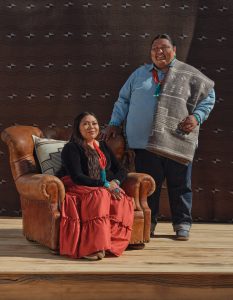Long before the first neon sign flickered over a casino in Las Vegas, Native American communities were gathering for spirited contests of chance and wit. Today, tribal casinos play a central role in the U.S. gambling industry. But how did ancient games once played with bones and sticks evolve into a billion-dollar economic engine on Native lands? A look at the Redding Rancheria handgame reveals how living tradition has bridged centuries, linking past rituals with the business of modern gaming.
Ancient Traditions and Modern Casinos
Gambling is deeply woven into the cultural fabric of many Native American tribes, dating back centuries before European colonization. For these communities, games of chance went far beyond mere amusement. They were integral to social exchange, spiritual practice, and community gatherings. Events often involved singing, storytelling, and ritualized competition, blurring the line between entertainment and ceremony.
These traditions established a historical precedent that would become pivotal in the modern era. When tribes asserted their right to operate casinos on their lands, they pointed to a long record of indigenous gambling practices. The argument was not simply economic—it was a matter of cultural continuity. For tribal leaders and members, gaming is both a heritage and a way to sustain their people in contemporary society.
Today, the situation remains the same, but there have been significant changes. The development of the internet has led to people now being able to play online without leaving their homes. Many Native Americans choose fast-paced games like Plinko. Almost anyone can play on plinkogames.in. The website also features an up-to-date selection of online platforms offering this game.
Rules and Rituals
The handgame, featured recently at the Redding Rancheria’s “big time” celebration, offers a vivid example of this living heritage. Rooted in centuries of tradition, the handgame brings community members together in a mix of competition and festivity.
Here’s how the handgame unfolds:
- Two teams, each with two players, face off across a table or blanket.
- While performing traditional songs, one team uses hand motions and subtle gestures to conceal a striped bone in one hand and an unmarked bone in the other.
- The opposing team watches closely, trying to guess which hand holds the marked bone.
- A correct guess earns a stick, the basic unit of victory.
- Play continues, with teams alternating roles, until one side collects all the sticks.
The event is not just about winning or losing. The air fills with rhythm, harmony, and the infectious energy of the crowd. Elders and youth gather to watch, cheer, and sometimes join in, transforming the game into a celebration of identity and kinship.
Cultural Continuity and Legal Recognition
For tribal leaders such as Jack Potter, chairman of the Redding Rancheria, the handgame is more than a pastime. “It’s a traditional form of gambling that tribes throughout the entire western hemisphere, from the top of North America to the bottom of South America, have always had,” Potter explained. For him and others, such games symbolized both resilience and belonging.
This cultural foundation became a legal foothold when Congress passed the Indian Gaming Regulatory Act (IGRA) in 1988. The IGRA established a framework for tribal gaming, acknowledging that gambling had a unique and protected role in Native American life. Its main goals were to regulate casino operations, protect tribal sovereignty, and ensure that gaming profits benefit communities.
By recognizing gaming as a legitimate extension of tribal tradition, the IGRA gave Native nations a powerful tool for economic development. It allowed them to negotiate compacts with states and to run casinos on their lands, provided they followed federal guidelines.
From Ritual to Industry—A Lasting Legacy
What connects a gathering of song-filled handgames to the glitter and bustle of tribal casinos? At heart, both settings blend ritual, risk, and fellowship. The handgame’s mix of skill, luck, and communal spectacle foreshadows the dynamics of today’s gaming halls.
How did a simple game with bones and sticks become the cornerstone of a billion-dollar industry? The journey lies in the resilience of Native tradition and the ability of tribes to adapt old practices to new realities. Recognizing the cultural depth of tribal gaming reveals not only a story of survival, but also one of innovation. The echoes of ancient songs and the clatter of sticks still resound in the modern casino, reminding us that gaming on Native lands is more than business—it is a living, evolving legacy.











